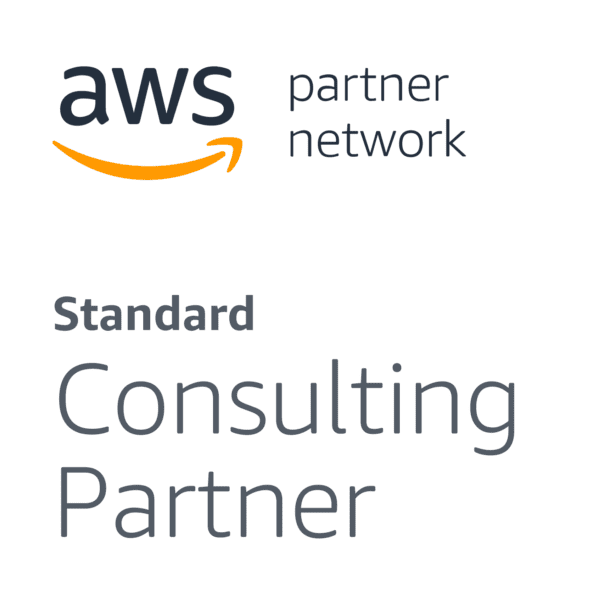Future is in cloud.
And the future is now!
Forget about infrastructure issues. Move to cloud and pay only for what you need at this point. Cloud computing simplifies data and applications, resulting in time, budget and resource savings.
Cloud Solution Models
Cloud computing is helping organizations to focus on what’s important and forget about all the recurrent work like maintenance, security updates, storage planning, etc.
- Software as a Service (SaaS)
- Mobile "backend" as a Service (MBaaS)
- Function as a Service (FaaS)
- Platform as a Service (PaaS)
- Serverless computing
- Infrastructure as a Service (IaaS)

Cloud Infrastructure & Hosting Services
SolDevelo helps you pick the proper cloud deployment model, service level, and management options. Our AWS certified cloud consultants are at your service to advise and deliver the cloud ecosystem that will be tailored to your specific needs.

Cloud Advantages
Save money
Move your servers to cloud and reduce infrastructure spendings by up to 50%.
Scale at your pace
Adjust all the parameters (CPU, storage, number of API requests, etc.) to your needs. Change them instantly as you grow.
Feel protected
Rest assured, your data is safe and can be easily recovered.
Deploy in seconds
This allows reducing time-to-market thanks to faster delivery of solutions to customers.
Unlimited storage
You grow even faster than expected? Don’t worry, that’s great! There are no limits in cloud storage capacity.
Easier collaboration
Team members can access all the instances from anywhere!
Cloud makes development easier. A web browser and Internet connection are the only things needed!
While most Cloud Platforms will provide uptime over 99,9% and cut down your maintenance costs, it is still important to properly maintain and monitor your Cloud deployment in order to take advantage of the reliability the Cloud provides.
Monitoring
We can set up proper monitoring that will let you know immediately when an issue occurs.
Support
We can also support your during these incidents, providing the knowledge and know-how that will allow you to get through them as fast as possible
Security
Thanks to our monitoring solutions, you will be able to proactively identify some of the issues before they arise, which will allow you to take actions earlier, without any impact on your customers.
Ready to take advantage of Cloud computing in order to scale at a fraction of the cost when compared to on-premise? We are here to guide you through this process.
By working with us, you are guaranteed to not only get to the Cloud safely and without a headache, but also to reach the most optimal destination thanks to our architectural and cost optimization expertise.
We will:
- Select the best services for your use case
- Prepare a migration plan that will minimize downtime and service interruption
- Use existing tools or write custom made scripts and software to make your transfer to the Cloud a success
- Carry out the migration to the Cloud
With our extensive portfolio in Cloud Development, we are ready to face your challenges and deliver anything you need.
- If you seek custom Cloud tools, pipelines, scripts or functions, we can offer suitable solutions to meet your requirements.
- If you wish to integrate your legacy system with a new Cloud service, we can deliver the proper modules, connectors, etc.
- If you want to make your solution Cloud native or cut costs by over 90% by moving from hosted solutions to serverless, we can also help – we’ve already done this before for multiple projects.
- Carry out the migration to the Cloud
Our experts will analyze your use case and deliver the best tool for the job.
Cut down your cloud hosting costs by as much as 50% by working with our experts.
With the growing number of available Cloud services and tools, it might be hard to keep track of what exactly generates the costs that appear on the invoice from the Cloud provider. Moreover, it might be challenging to identify which of these costs are necessary, which can be optimized, and which can be removed completely. Not to mention Cloud providers offer savings plans and opportunities that can make everything even more complicated.
Allow our specialists to help. We will assess your Cloud spending and suggest the best course of action. We will work together with you to cut your costs down.
We have a proven track record of going down with AWS Cloud hosting costs by as much as 50% on Cloud fees.
Shortage of time or experience?
We can augment your team with our professionals that will help you deliver your project at lower costs.
Do not reinvent the wheel. Use our expertise from multiple projects that we are happy to share. Leverage the practices and know-how gathered by our specialists.
Allow our specialists to help. We will assess your Cloud spending and suggest the best course of action. We will work together with you to cut your costs down.
We have a proven track record of going down with AWS Cloud hosting costs by as much as 50% on Cloud fees.
Cloud in numbers
90%
Fortune 100 companies are using AWS cloud solutions
$947.3 bln
Cloud market size expected by 2026 (ReportLinker)
245
number of countries where AWS is being used
Are you ready to move to cloud? They are:





Is it hard to switch your project to cloud?
Cultural adjustments
Moving from on premise hosting to cloud hosting requires a comprehensive approach that includes the transformation of your organizational culture. Developers need to get used to the new requirements and notice the importance of DevOps workflow in order to appreciate it.
Legacy versions
Maintaining outdated versions of your system might be essential to some parts of the business. An experienced cloud engineer’s advice can help you decide whether your legacy software should be migrated to the cloud or kept on premise till the end of its existence.
Partial cloud usage
The lack of holistic approach to cloud adoption can cause unnecessary complications and development efficiency issues. To ensure your organization benefits from migrating to the cloud, think about it more strategically and try to involve all of the departments from the very beginning.
Industries that can benefit from moving to cloud
- Healthcare
- Logistics
- Fintech
- Insurance
- Education
- Retail
- Automotive
- Production
